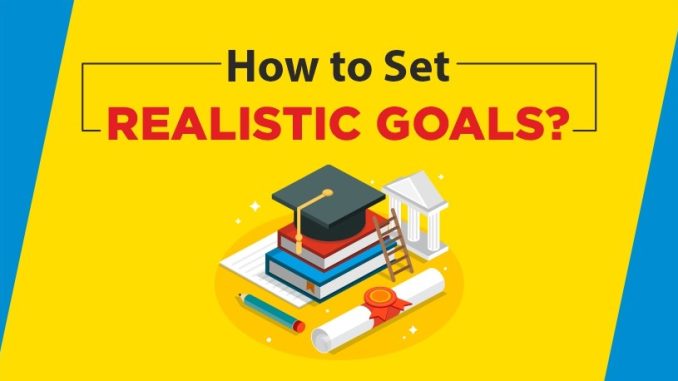
In the dynamic journey of learning and personal development, the ability to set and pursue meaningful goals is a cornerstone of success. For students across all educational stages—from elementary school to university and even into professional training programs—effective goal setting serves as a powerful motivator, providing direction, purpose, and a framework for progress. However, the mere act of setting goals is insufficient; the true art lies in setting *realistic* goals. Unrealistic aspirations, while seemingly ambitious, can quickly lead to frustration, burnout, and a damaging sense of failure. Educators, mentors, and indeed, anyone involved in guiding learners, bear a critical responsibility in helping students calibrate their ambitions with their capabilities and available resources, fostering a balanced approach that promotes sustained effort and genuine achievement. This thoughtful guidance is not about stifling ambition but about cultivating resilient, self-aware individuals who understand the incremental nature of true accomplishment.
The initial step in helping students set realistic goals involves fostering a deep understanding of their current capabilities and resources. This requires open and honest self-assessment, guided by empathetic questioning rather than directive pronouncements. Students often possess an incomplete picture of their strengths, weaknesses, and the external factors that influence their learning journey. A student aiming for perfect scores in every subject, for example, might not fully grasp the time commitment required, their existing knowledge gaps, or the external demands on their schedule. Educators can facilitate this self-reflection by encouraging students to review past performance, identify patterns in their learning process, and consider their current workload and personal commitments. This diagnostic phase is akin to a business conducting a SWOT analysis before setting strategic objectives; understanding the internal and external landscape is crucial for defining achievable targets.
Once a clearer picture of capabilities emerges, the conversation should shift to making goals specific, measurable, achievable, relevant, and time-bound—the widely recognized SMART framework. While seemingly straightforward, applying SMART principles requires careful coaching. For example, a vague goal like “I want to do better in math” is unlikely to yield results. A more realistic and actionable goal would be: “I will improve my algebra test scores by 10% in the next grading period by dedicating 30 minutes each day to practice problems and attending one extra help session per week.” This detailed phrasing provides a clear target, outlines the necessary actions, and establishes a timeline for evaluation, transforming an abstract desire into a concrete plan. This level of specificity is vital; it breaks down the overwhelming nature of broad aspirations into manageable, actionable steps, making the path to achievement feel less daunting and more tangible.
A crucial aspect of setting realistic goals involves breaking down large, long-term objectives into smaller, more manageable short-term milestones. A student aiming to learn a new programming language within a year might feel overwhelmed by the sheer volume of information. However, by breaking it down into weekly or monthly goals—such as “complete introductory Python course by end of month one,” or “build a simple web application by the end of month three”—the overall objective becomes far less intimidating. Each successfully achieved milestone provides a sense of accomplishment, reinforcing motivation and providing tangible evidence of progress. This incremental approach mirrors project management in the business world, where complex projects are divided into phases and deliverables, ensuring continuous momentum and allowing for adjustments along the way. It also provides opportunities for early feedback and course correction, preventing students from veering too far off track before major issues arise.
Furthermore, it is essential to discuss potential obstacles and develop contingency plans. Realistic goal setting is not about predicting a perfect path; it’s about anticipating challenges and preparing for them. Students should be guided to consider what might hinder their progress—be it a lack of time, difficulty with a specific concept, or unexpected personal commitments—and brainstorm strategies to overcome these hurdles. This proactive problem-solving builds resilience and equips students with a sense of control even in the face of adversity. For example, if a student anticipates a busy week, their goal might be adjusted from “study for two hours daily” to “study for one hour daily and dedicate extra time on the weekend.” This flexibility within a structured framework prevents early derailment and fosters adaptive thinking, a vital skill in any dynamic environment.
Finally, consistent monitoring, feedback, and celebration are indispensable components of the process. Setting a goal is just the beginning; regular check-ins are vital to track progress, make necessary adjustments, and provide encouragement. This doesn’t mean constant scrutiny, but rather scheduled opportunities for reflection and discussion. When a student achieves a milestone, no matter how small, acknowledging their effort and success reinforces positive behaviors and bolsters confidence. Conversely, if a goal proves too challenging, the feedback loop allows for a collaborative recalibration without judgment, teaching students the valuable lesson that adjustment is a sign of wisdom, not failure. This ongoing dialogue fosters a supportive environment where goals are seen as living documents, adaptable to evolving circumstances and growing capabilities.
In conclusion, guiding students to set realistic goals is a profound investment in their long-term success and well-being. It moves beyond aspirational thinking to cultivate a disciplined, self-aware approach to achievement. By helping students accurately assess their capabilities, apply the SMART framework, break down large objectives into manageable steps, anticipate obstacles, and engage in continuous monitoring and reflection, educators and mentors empower them to pursue their ambitions with a strategic mindset. This process not only leads to more tangible accomplishments but also instills invaluable life skills: resilience, adaptability, self-management, and a deep understanding of how effort and strategic planning translate into meaningful progress. These are the foundational elements of success, equipping students not just for academic triumphs, but for a lifetime of purposeful endeavor.